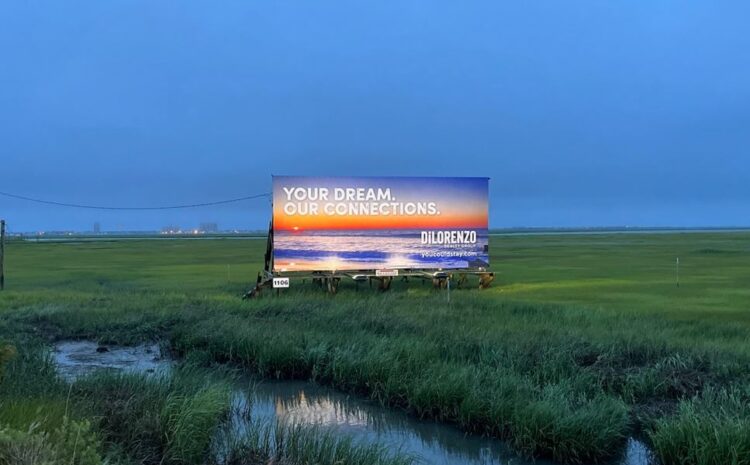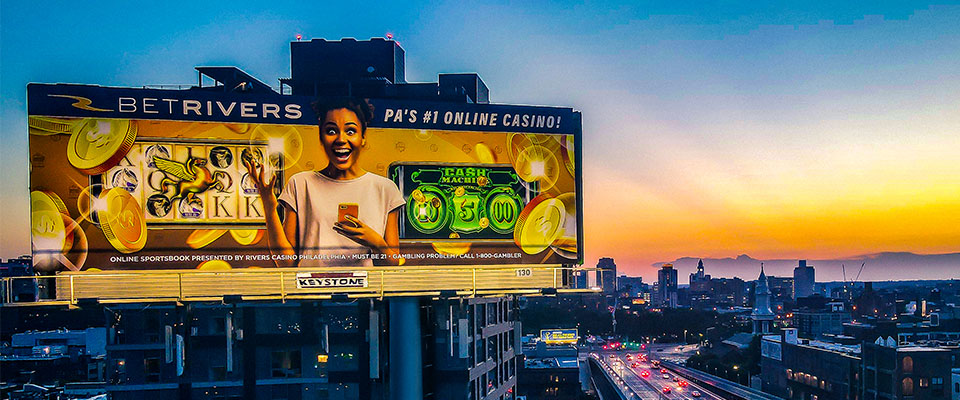By: Mitzi Perdue
Billboards have more of an impact on you than you know! Let Monica McGrail explain why.
She’s the Marketing Manager for Keystone Outdoor Advertising, and she as she points out, “The unconscious mind can process 11 million pieces of information per second, and most of the time you don’t know you’re doing it.”
McGrail gives as an example a common occurrence, one that psychologists have frequently studied. “Let’s say you’ve passed a billboard several times that happens to recommend a new movie. Then, you come across a commercial on TV for the same movie.”
According to McGrail, you’re likely to think, “Oh, I’ve heard that’s really a great movie!” even though you don’t know where your attitude came from. The impact of the billboard was subliminal.
Interestingly, people have known about the effectiveness of billboards for at least 5000 years, going back to the time of Ancient Egypt. In fact, according to McGrail, “Billboards are the oldest form of advertising there is.”
She goes on to explain that the Ancient Egyptians would etch giant stones in the middle of town with messages where the most people would pass. They’d use them to publicize laws or treaties or military victories.
“Today,” she continues, “we aren’t using large stones, but instead we use large vinyl signs that are typically 14 feet by 48 feet. Like the Ancient Egyptians, we put them where the largest number of people are likely to see them. In modern times, that means near bridges, tunnels, airports or other high-traffic areas.”
When you’re driving by a billboard, you might not easily guess that today’s billboards are as large as they are. “You can get a feel for their size,” points out McGrail, “because sometimes you can see what looks like tiny ladders on their sides. The ladders are normal size for a person to use, but they look tiny because they’re distant.”
McGrail loves being a part of the billboard industry for many reasons, but one of them is, the industry has a tradition of giving back to the community. As an example, a project she’s working on right now is raising awareness about human trafficking.
In her opinion, billboards are an outstanding means for accomplishing this. “People who don’t already know about human trafficking probably aren’t going to do a Google search on it. But with billboards, millions will become aware of it.”
What about the problem that the subject is really dark?
“We’ve chosen not to show images of people who are suffering. Instead, we show kids of every race and ethnicity. On the billboards we’ve done for the anti-trafficking organization, ‘In His Image,’ you’ll see a young person whom you’d relate to because the image looks like your son or daughter, sister or nephew, or maybe a neighborhood kid you know.”
If you would like to judge the effectiveness of the “In His Image” billboards, notice some of the following factors:
- The image is relatable and emotional
- The message is concise, eight words or less
- You can take the whole thing in, in less than four seconds
- The colors “pop” against the landscape where the billboard is located
- It has a call to action, such as inviting people to visit a website.
For McGrail, working in the billboard industry leads her to say, “I want my work to have meaning. We know that lives are being saved through our anti-human-trafficking messages, and how much more meaningful can you get?”



